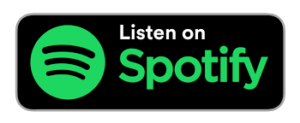In each of the first 12 episodes of “Barbara London Calling,” I spoke with artists working at the forefront of technology and creativity. But today, for the 13th and final episode of Season 1, I’m speaking with a curator who is helping to build a space and platform for those artists to continue their exploration.
Today I’m joined by Chrissie Iles, the Anne & Joel Ehrenkranz Curator at the Whitney Museum of American Art in New York. As a leading authority on contemporary art and the moving image, Chrissie has curated important exhibitions, including “Into the Light: The Projected Image in American Art, 1964-1977” and “Dreamlands: Immersive Cinema and Art, 1905-2016.”
Chrissie, I’ve been trying to remember when we first met—I believe it was while you were Head of Exhibitions at the Museum of Modern Art in Oxford, England. We’ve been wonderful colleagues and friends ever since. Thanks so much for joining me, and welcome to the season finale of “Barbara London Calling.”
Chrissie Iles: Barbara, thank you very much for having me on your podcast. It’s a real honor, and a real pleasure to be talking together.
[Continue reading for full transcript.]
Transcript
Barbara London: Let’s start when you were focusing on contemporary art, and what might be called traditional visual arts. What was your trajectory into the moving image and media art?
Chrissie Iles: The moving image and interdisciplinary work were part of my experience of art from the very beginning. When I was a student at Bristol University, I was studying the history of art and political history, focusing on Medieval and Renaissance art as a volunteer guard at the galleries at the Arnolfini, which is a nonprofit space similar to ICA [Institute of Contemporary Arts]. It combined a gallery, a cinema, and a space for performance and dance, combined in a sort of cross-disciplinary cultural environment that exposed me to contemporary art—which I hadn’t grown up with and didn’t know—all within a larger framework of cinema, performance, dance and literature.
That hybridity has informed my approach ever since. Indeed, this kind of hybridity is very present in, especially, the medieval period. So I never saw one medium as distinct from another in terms of that kind of Modernist separation. It felt natural to me, because I was born and brought up in Beirut, and the Mediterranean and Middle East. From the beginning, I was immersed in very different communities and cultures, as well as architectural spaces of the ancient world. This gave me a very deep, temporal perspective, because those ancient spaces are indivisible from more modern cities. There’s a kind of hybridity there, a kind of layered sense of history for these layers of interrelationships between things.
I carried that to the Waterloo Gallery, which was basically an artist’s studio space in a warehouse. Artists from the space themselves curated shows, so I sort of launched in with zero experience. I worked with them and started curating, which included performance and video. After working at the Waterloo Gallery, where we had a lot of interdisciplinary experimentation, we all had to leave because the building was sold. For a while I worked at the Royal College of Art as a temporary assistant to the head of experimental media, Peter Kardia. He was curating a large show of film and video and experimental media, with two generations of artists who had come out of the Royal College.
So I suddenly found myself working with very important British artists of the period who were working with the moving image and experimental media, including Susan Hiller, David Hall, Tamara Krikorian, Stuart Brisley, Peter Kardia, David Medalla, Patrick Keeler and Isaac Julian.
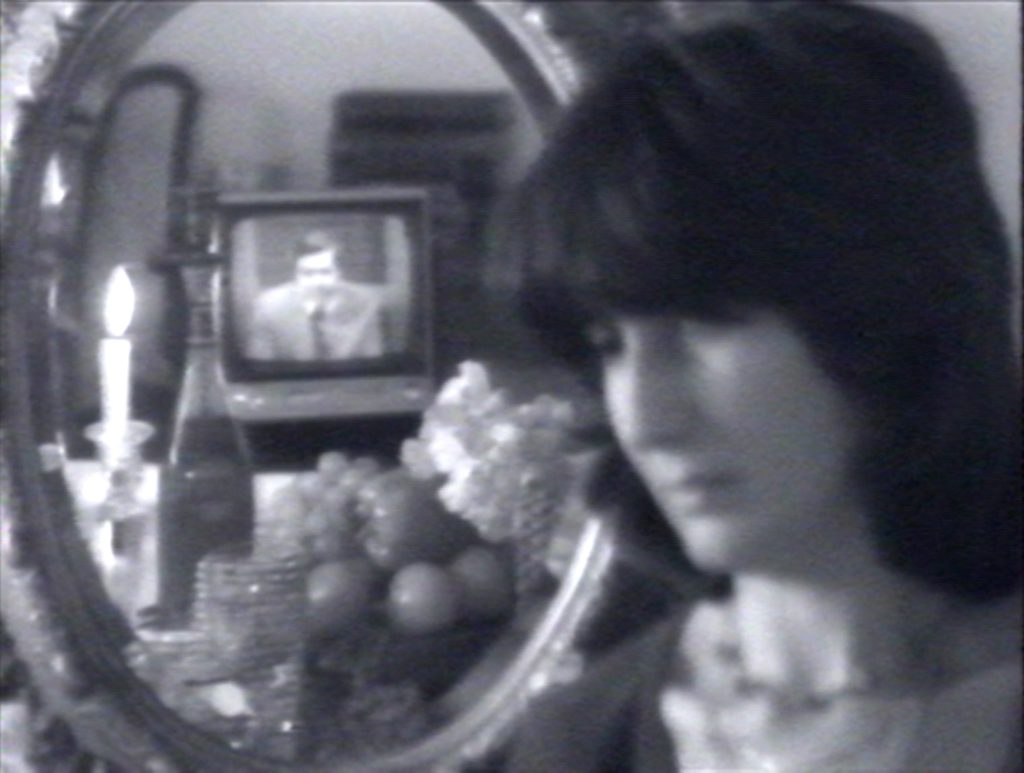
Image: Courtesy the estate of Tamara Krikorian/ LUX, London.
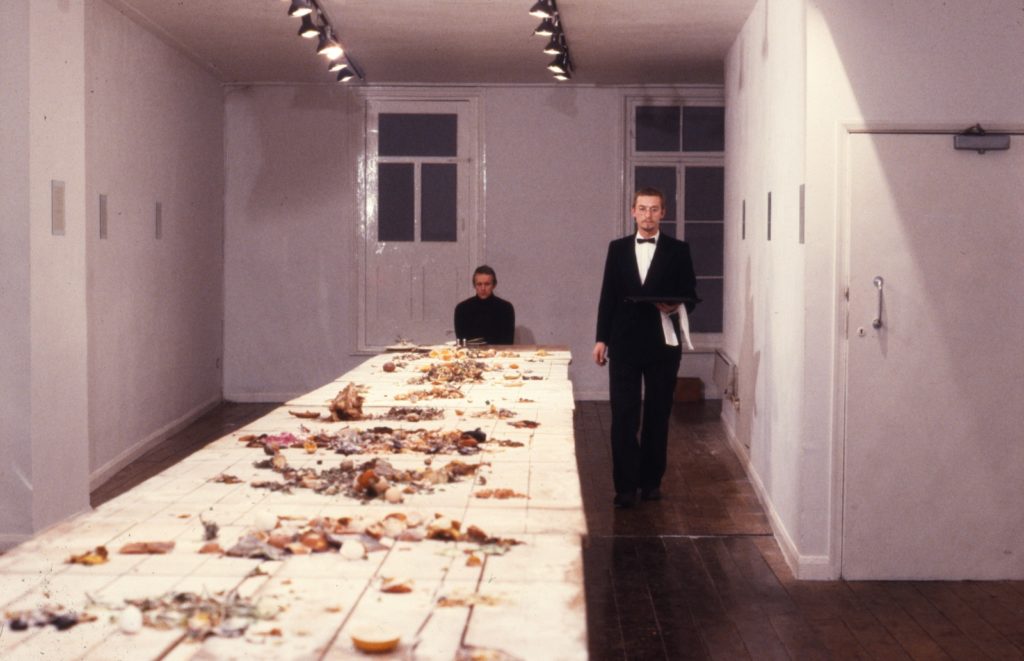
Film transferred to video.
Courtesy the artist.
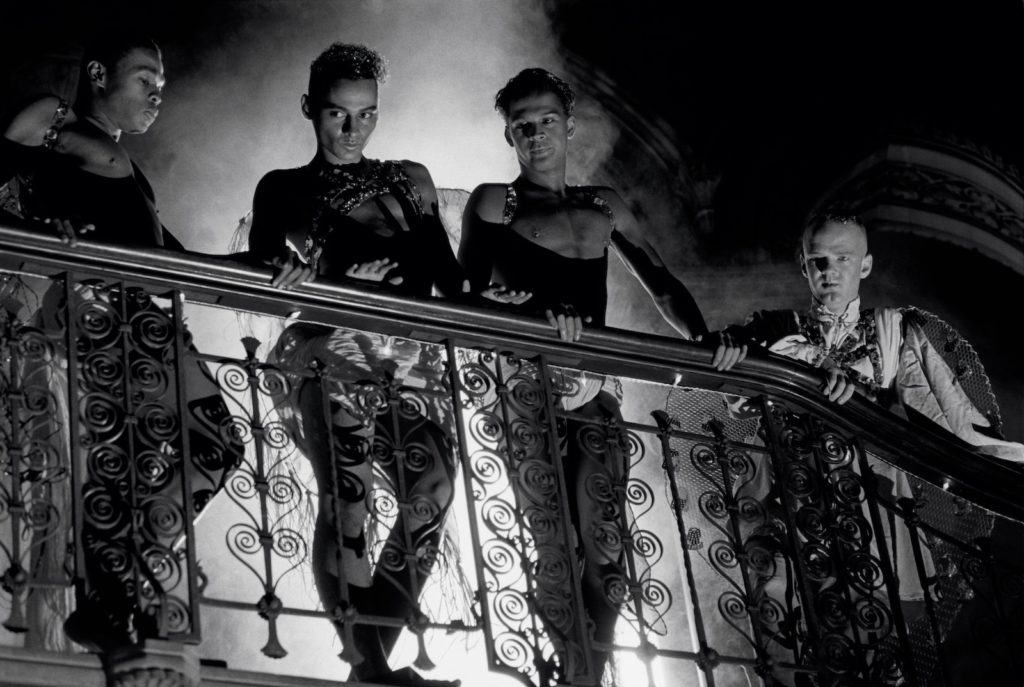
This was very formative for me, because [the artists] were teaching me. I was learning every single day from them. At the same time, I was going to the London Filmmakers Co-op, watching experimental films, going to performances in warehouses, going to concerts by Sun Ra and Fela Kuti and Test Department, who used projected slides and multimedia, and also Derek Jarman, who was a very key figure around which the young generation revolved. He worked in a very collaborative, experimental way.
There’s a very powerful energy around that time that I gravitated towards and found myself in the middle of. I placed myself in the middle of all these very different areas of experimentation. Then I started working for Robin Klassnik as his assistant at Matt’s Gallery on Martello Street in London’s East End. Robin is an artist who turned his studio into a gallery for other artists. He flipped the usual pattern of organizing an exhibition and opening it for two or three months, to having the artist in his studio for two to three months and then opening the show for two weeks. I organized every aspect of the shows with Robin, and that included video installations.
I remember trying to find video projectors for Susan Hiller’s piece An Entertainment, which was one of the shows. It was a big task to find video projectors in London at the time. It was Robin who really taught me that nothing the artist needed was too much trouble, even if someone wanted to spend two days lighting one painting. I learned my patience and close listening, attentive care and empathy for artists and attention to detail, especially with moving-image media installations, which are so complex to present and work with. I was also doing experimental shows and events myself with the artists I was meeting. I went to Berlin and curated films in an alternative space during the Berlin Film Festival. I was very engaged with experimental ideas and the moving image, performance and video and expanded cinema, all these different mediums and different approaches by artists. I was surrounded by them and very deeply drawn to them.
But at the same time, I’ve always loved painting and sculpture, so I never saw that as separate. Then I got to the Museum of Modern Art in Oxford. I had applied for that position because I wanted to synthesize everything into a more formal and maybe art historical framework. David Elliot was my director, and I think he hired me because he saw himself in me. He was also someone very open, very cross disciplinary, and very resistant to dominant Eurocentric art power structures. He was a Russian specialist, who curated [Vladimir] Mayakovsky and [Alexander] Rodchenko shows. But he was also working with filmmakers like [Akira] Kurosawa, Satyajit Ray.
David Elliot’s shows ranged from Poland, to Argentina and South Africa. He was very supportive—he mentored and encouraged me. I proposed a thematic show of two generations of time-based media artists in Britain in the 1980s, building on the experience I had as very young [woman] emerging into the curatorial scene. So I brought these two generations of artists together, and it was a big success. The artists included Stuart Marshall and Tina Keane, who was a big influence on me. I was doing that at the same time I was doing a Louise Bourgeois show, and shows with Sol LeWitt and John Latham. I was also meeting artists like Carolee Schneemann and Dan Graham in New York. Everything was very interconnected.
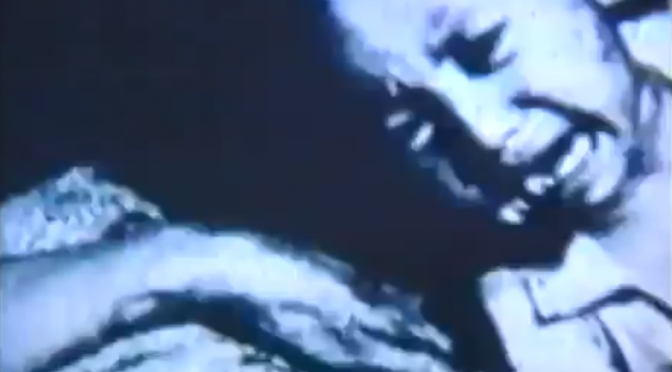
Courtesy of Electronic Arts Intermix (EAI), New York.
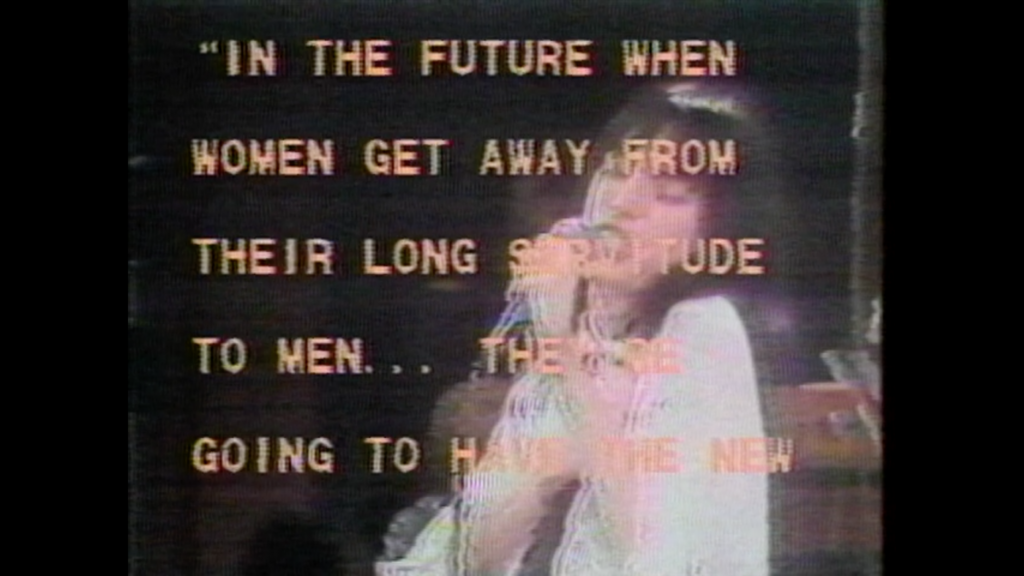
Courtesy of Electronic Arts Intermix (EAI), New York.
BL: It’s all so interesting, the hybridity, the interdisciplinary nature. In a way, artists are our teachers as we’re working and figuring out what’s what. And we also need mentors like David Elliot, who sometimes open the door for us to new situations.
That brings us to the next topic, which is how technology is always advancing. With it comes a wide-open terrain, offering all sorts of new possibilities. This is what I explained in my book, Video/Art: The First Fifty Years, and it’s really the focus of this podcast series. For example, when I began my career as a curator at MoMA, the steady advancement of technology is really what drew me in to investigate how artists were working with video, performance, new music and sound. You’ve already explained your involvement with both technology and contemporary art—was there something you saw in technology as an important part of contemporary art?
CI: I guess I didn’t really see technology; I just saw ideas. I didn’t really pay attention to what the artists were using. I just paid attention to what they were making. Also, there were some aspects of the way in which artists were working that was very DIY, very low tech. One of the shows I did at the Waterloo Gallery, which is one of the first shows I ever curated, was with the band called Wire. They came in and took over this enormous space. They darkened the space and placed high tension wires, which they fixed from the floor to the ceiling at different angles. You moved through the space and touched the wires, as if the entire space had become an instrument. People would just walk through and play this instrument. Brian Eno came and was a big influence on that piece and on my thinking at the time.
I guess what drew me was not so much technology as experimentation, and the way in which these ways of working created a different kind of space than the white cube of the gallery. The white cube of a gallery is a very Modernist construct, like like a cinema space. It’s a Modernist structure that belongs to a particular period in art history. So I liked the way in which artists challenging that space were not dependent on it but drawn to it. But they also used it as a way to ask questions and push back.
It’s not so much technology as non-objecthood, even though artists could be very material in the way they use slides or cut up films or whatever they’re doing. To me, it’s all material. Sound is very material; it’s just a different kind of materiality. When you see a painting, you look at the time that painting has taken to be made, which is condensed within the painting. In a way, we’re looking at a time-based medium as well, it’s just condensed. You look at it, then you move away from it. With something time-based—whether it’s video, film, sound, whatever it is—you are experiencing the conditions of its making and the experience both in the same timeframe. So it’s just a different experience of time.
BL: I remember how the science-fiction illustrator Ed Emshwiller would describe how he would get so frustrated when he worked on a painting that kept changing. He began filming because he wanted to document the traces of those changes. In a way, that’s how he got into the moving image, which is much like what you’re talking about.
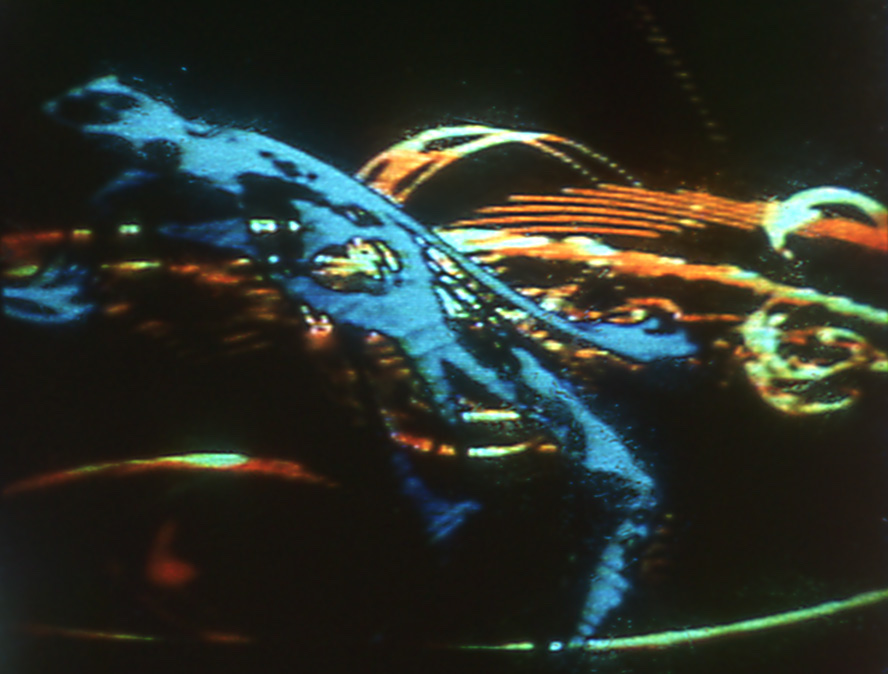
Courtesy of Electronic Arts Intermix (EAI), New York.
I think the whole idea of DIY is also interesting. As a curator, you, like me, had to find new ways. We were as DIY as the artists we worked with. Figuring out and defining is what makes the field so interesting, because it’s always changing.
There’s attention often paid to these two terms, “new media” and “media art,” the former being industry jargon. Personally, I don’t like definitions, because they’re just a prop for a particular moment. Do you see a difference between the terms, new media and media art?
CI: The way I use terms is really guided by how the artist defines their work. I never put it in a predetermined box. I’m guided by what the work says and how the artist frames the work and perceives the work. I don’t tend to use the terms “media art,” “new media art.” My colleague at the Whitney, Christiane Paul, is curator of what could be termed “digital art.” Her work is very different from mine, even though, of course, there are many crossovers. She’s done and is doing extraordinary work in her curating and in her scholarship and writing, with work that is more based on ideas of the digital, going back to the 1950s and ’60s. Her show at the Whitney, “Programmed: Rules, Codes, and Choreographies in Art, 1965–2018,” is a fantastic example of that.
Whereas I tend to work more with film installations or ideas of the cinematic. I don’t really see these categories as being different from each other; they’re interrelated. It’s just really the way the artist works. For example, Christiane and I both work with Cory Arcangel, or we might both work with American Artist, but in different ways.
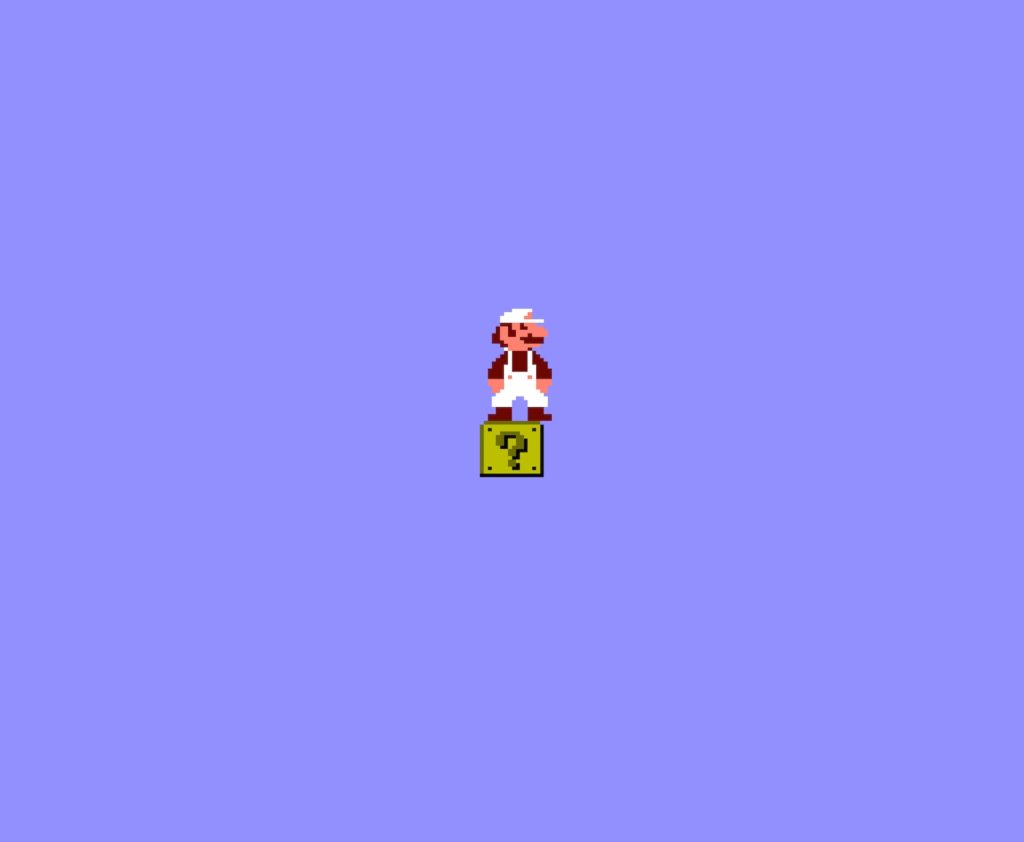
Courtesy of Cory Arcangel.
I don’t tend to work with artists who work online, whose practice resides on the internet, online or within the computer. I tend to work with artists more like Cauleen Smith, to name an artist with a show up at the moment, or a show that’s opening in March with Madeline Hollander, who’s a dancer and choreographer who happens to have made a video installation as part of a larger research-based practice.
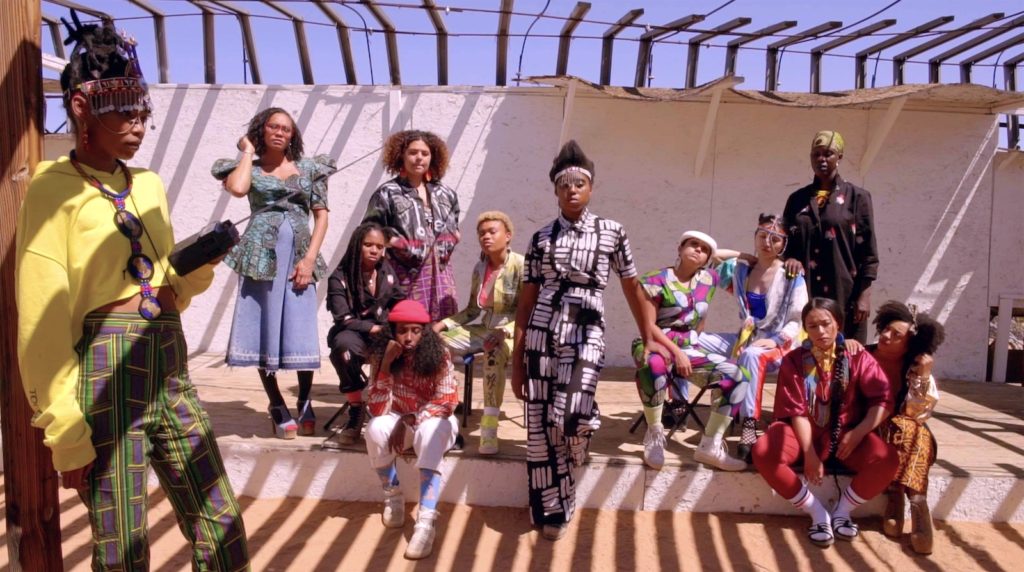
So it really depends. That’s not to say it’s a specific decision, it just tends to be where my own curatorial experience and tendencies lie. Artists themselves work, of course, across media. So if Cauleen Smith were to do something on the internet, I would work with her on that. So, it really depends.
BL: I’m curious because, as curators, both you and Christiane Paul have different approaches. That’s positive because it means the exhibition program and the collection both reflect this breadth—you’re working to keep an art collection relevant at such an important museum as the Whitney.
CI: When I first came to the Whitney, it had a very small collection of moving-image art. One of the key aspects of my work at the Whitney has been to build that collection. We’ve gone from twenty-eight works to seven hundred and fifty. We have the largest collection of moving-image works by black artists. We have a very, very diverse collection. We also have built the collection with an historical depth, so we have a very strong body of historical installations from the 1960s and ’70s that I found through talking to artists and discovering these works, rediscovering and restoring them, showing them and bringing them into the collection.
The other way in which I’ve been building the collection is by tracking the Whitney’s own history with experimental work, right from the beginning of when film began to be included in the program, with David Bienstock first, then Marcia Tucker, then John Hanhardt. We premiered Angela Davis: Portrait of a Revolutionary by Yolande du Luart in 1971 and the 1972 documentary Winter Soldier. The history of protest and activism in the Whitney’s program is very important and is reflected in our collection. Then also is the Whitney’s close engagement with Yvonne Rainer, Trisha Brown and Paul Sharits—how those artists’ early, very experimental works were shown at the Whitney is reflected in the collection. The Whitney’s purview is very specific: It’s the Whitney Museum of American Art, with a focus on the contemporary framed by the historical.
I also bring in a lot of very young, emerging artists working with the moving image, which is in the Whitney’s tradition, because the museum was founded by an artist to support fellow artists. We have a tradition of bringing artists into the collection at a very early stage in their career, often through the biennial. So I have introduced artists at an early stage in their career and had a dialogue with them that began very much at the beginning.
Another initiative that I’m working on with my colleagues at the Whitney is an MPI, a media preservation initiative in which we contact all the other museums or owners of the same time-based work as us.
If the work is editioned, in an edition, we can pool our knowledge and share our scholarship, because we’re effectively all looking after the same work. Stewardship is a very important part of my work and of the museum’s responsibility to the moving image. The moving image installations are particularly vulnerable, because their medium hybridity makes them inherently hard to categorize. This makes the works vulnerable within a museum context, because they don’t conform to established museological conventions of either presentation or classification, or preservation. Sometimes they are created anew each time. Their material form can change, and they challenge notions of value based on rarity.
They address ephemerality, immutability, collectivity, and democratic access. Often the historical work is part of a radical art practice. How do you preserve the traces of a radical art practice within the museum collection? And how do you make sure, because technology is changing over time, that the works don’t become vulnerable to the wrong aspect ratio. My biggest nightmare is that everything would be presented on a flat screen with headphones. So, how to protect the works integrity, which is going back to the responsibility we have to the artist.
BL: I think what you and your museum are doing is crucial. I know MoMA is doing something similar with its collection, as is the Tate, the Pompidou, and SFMOMA. They hold a body of knowledge that’s so important. As the field unfolds, as we look back and perpetually redefine, we uphold the never-ending job of stewardship. Change occurs in the present, and that shapes how we look at the past. It’s so complex, and it’s very important to be aware. Actually, I went to graduate school with your colleague Carol Mancusi-Ungaro, Associate Director for Conservation and Research at the Whitney, who’s addressing these large issues.
I’d like now to move on to a very topical issue. This podcast series was developed, recorded and published entirely during the Covid pandemic. Looking back, it seems quite miraculous that during the lockdown I was able to engage in meaningful conversations with artists in their studios around the world, in Recife, Singapore, Hong Kong, Oslo, London, Istanbul, and of course, New York. Covid has been a time of incomprehensible tragedy, and a time for everyone to rethink the way they live and the way they work. I spoke with thirteen artists in the twelve episodes, and most managed to hunker down and work, despite the circumstances. I’m wondering, do you get a sense of how the pandemic has affected art and artists? And what breakthroughs might we see post-Covid?
CI: This period has been transformative, as you say, both in the tragedy and the loss of so many lives, financial disaster, and suffering. It’s also an urgent reset that’s been needed. To me, the central, important moment was the uprising in June. I mean, the urgent need for social justice, the far-reaching change we need on every level, really catalyzed into that. It was national, it was international, and global even. The pandemic has really shown us very clearly that the way the world had been operating wasn’t sustainable. We created the pandemic, and it’s revealed every crack in the social, political, and economic fabric, especially of this country where there’s no support for artists, or very little from the government. It’s showing us not only where those cracks are, but how we might fix them. Of course, artists, as always, are at the center of everything, including all the issues arising from the uprising, from the social and economic inequities that were revealed. It’s because artists have always been there, [active with] the social justice that’s necessary to address in a more systemic and deeper and meaningful way, which has taken a big step forward.
Artists are a very central part of that. There are many different imaginative ways in which artists have been working during the pandemic. I’m thinking of, say, Atom Egoyan, who’s in the middle of shooting a new film. From his studio in Vietnam, he shot it in Marseille remotely. Cauleen Smith created her lockdown film series on Instagram. Meriem Bennani created Two Lizards, a series of eight short videos about her and her partner dealing with the lockdown. She posted those on her Instagram feed in July and had up to 180,000 viewers. It was really a very powerful way for the community to connect, when everybody was at home.
BL: What you’re talking about is very important and very central. There are two things. One is what we now can do with the new tools, whether it’s TikTok or something else. And there is the element of simultaneity, that we have a good sense of what’s happening on the other side of the world, what the politics there are, how artists are responding to events. I wonder if you want to say something about that, this issue of simultaneity. Also, new tools are being used, not old ones. New ideas are told in very cogent ways, relevant especially to today.
CI: I think the issue of community is central, a really crucial part of what everyone has been going through. It has been the shift from output to input, in order to transform the way we output, if you like. I think issues of care have become central. Everybody living on their screens has made people’s home lives who they are important as a person, not just what they produce. The care of each other, the mutual aid has been possible to really put into a form that maybe we didn’t do before, to such a degree, through platforms like Instagram, for example.
Instagram became a support structure, a place to exchange information about how to participate in mutual aid, to support black trans lives. It became a cinema space; it became a publishing house; it’s become the bringing together of activism and artists. It’s become a library, a place for sharing, scholarship, and writing. It’s like Open Access TV, with Instagram Live and Instagram Reels. It’s an exchange of information. It’s a place for emotional support, community building, meditation. Covid really brought us back to ourselves. Artists have seized that moment, and really helped us completely transform the way in which we understand our support for them, the way we amplify their voices, the way they communicate with each other, the way they create, the way that scholarship can be shared.
The financial precocity that most artists are experiencing right now is not going away. The big economy is not coming back anytime soon. And we’re not going to wait another hundred years for a pandemic. Deforestation of the Amazon and climate change mean that this kind of thing is going to happen more frequently, along with everything else that climate change is bringing. This greater mutual support is necessary for our survival, both culturally and also as a species. It’s going to transform the way we make and experience art. Already artists could barely live in New York City, because gentrification and global capitalism are making it untenable for almost all of us. I think that what happens online is part of a larger social change that’s occurring, a very deep and lasting social change that is indivisible from climate change.
BL: I think we’re going to see unbelievable change in all kinds of ways. I think even in New York rents are going to drop dramatically, with so many people fleeing. But the one point that I want to make with all of that communication we have, or that new sharing and the new caring, the one thing I’m always concerned about is that we retain the sense of openness, so that we have understanding and acceptance or tolerance for different points of view. Not everybody is going to think like us, or them. I think that takes a certain amount of openness and humility.
CI: Legacy Russell recently published a new book, Glitch Feminism and Manifesto. She talks about the non-binary black body in digital space. She’s calling for an end to the gendered body. She is talking about the way in which we need to let go of old white supremacist patterns that have held our culture in this stultifying frame that is just not tenable. So the role of the artist and the curator, I think, is to create new platforms and new models for which a different cultural future can unfold. Legacy says, “Let the whole goddamn thing short circuit,” and that’s kind of what’s happening. We need to break it open again.
Legacy talks about paving the way for the kaleidoscopic future we want. This shift is permanent, and it’s up to us, as curators, to support the ways in which artists are leading the way in trying to create new models for what that future could be.
BL: I think that’s a great statement and a great way to wind down. You’ve articulated important ideas and shared terrific information. It’s a very exciting future.
Chrissie, I want to thank you for joining for this season finale. And I want to thank all of our listeners who joined us for these thirteen conversations, investigating what is and isn’t media art.
I was fascinated that, I would say, 99 percent of the artists I spoke with did not want to be called a “media artist.” It’s a very limiting term, and I think, Chrissie, we already went over that terrain. We are interested in artists for their ideas, for how they push boundaries, how they push definitions, how they show their humanism, how they show their concern for what can only be called “the other.” “The other” could be someone they see on the street, someone who’s looking at their artwork online or in a museum. So it’s fascinating that, during Covid, many museums and art galleries were forced to close, and so much went online. I remember in the podcast series, artist Rachel Rossin said that after a month or two of lockdown, she was so tired of looking at tiny screens. A tiny screen is this glowing surface—we can dive into it. We can connect with people on a platform like Zoom, and that’s the way we’ve actually been able to see each other. Like Chrissie, you and myself right now.
I guess I’m always ready for the challenge of an artist to throw me, so that I have to dig deep inside myself and figure out what it is they’re doing, what it is they’re feeling, what it is they’re thinking, and what it is they’re saying. I always find the best to be the ones who understand the context and really push a definition of what art is. And that, to me, is the poetry of it all.
Over the many years I was at MoMA as a curator, I respected each artist for their ideas; for their understanding of how to use new tools and old tools; how to merge image and sound; and how to do it often with the barest of economies.
Artists are unbelievably inventive. That’s why I’ve always been so honored, for them taking me to a new place. That’s the bottom line: Where is an artist taking me with their work? Whether it’s on the screen, whether it’s in a space, I want them to make my heart beat.
—
Support for “Barbara London Calling” is generously provided by Bobbie Foshay and Independent Curators International in conjunction with their upcoming exhibition, “Seeing Sound,” curated by Barbara London.
Be sure to like and subscribe to “Barbara London Calling” so you can keep up with all the latest episodes. Follow us on Instagram at @Barbara_London_Calling and check out BarbaraLondon.net for transcripts of each episode and links to the works discussed.
“Barbara London Calling” is produced by Bower Blue , with lead producer Ryan Leahey and audio engineer Amar Ibrahim. Special thanks to Le Tigre for graciously providing our music.
This conversation was recorded December 11, 2020; it has been edited for length and clarity.
Images & Video

Image: Courtesy the estate of Tamara Krikorian/ LUX, London.

Film transferred to video.
Courtesy the artist.


Courtesy of Electronic Arts Intermix (EAI), New York.

Courtesy of Electronic Arts Intermix (EAI), New York.

Courtesy of Electronic Arts Intermix (EAI), New York.

Courtesy of Cory Arcangel.

